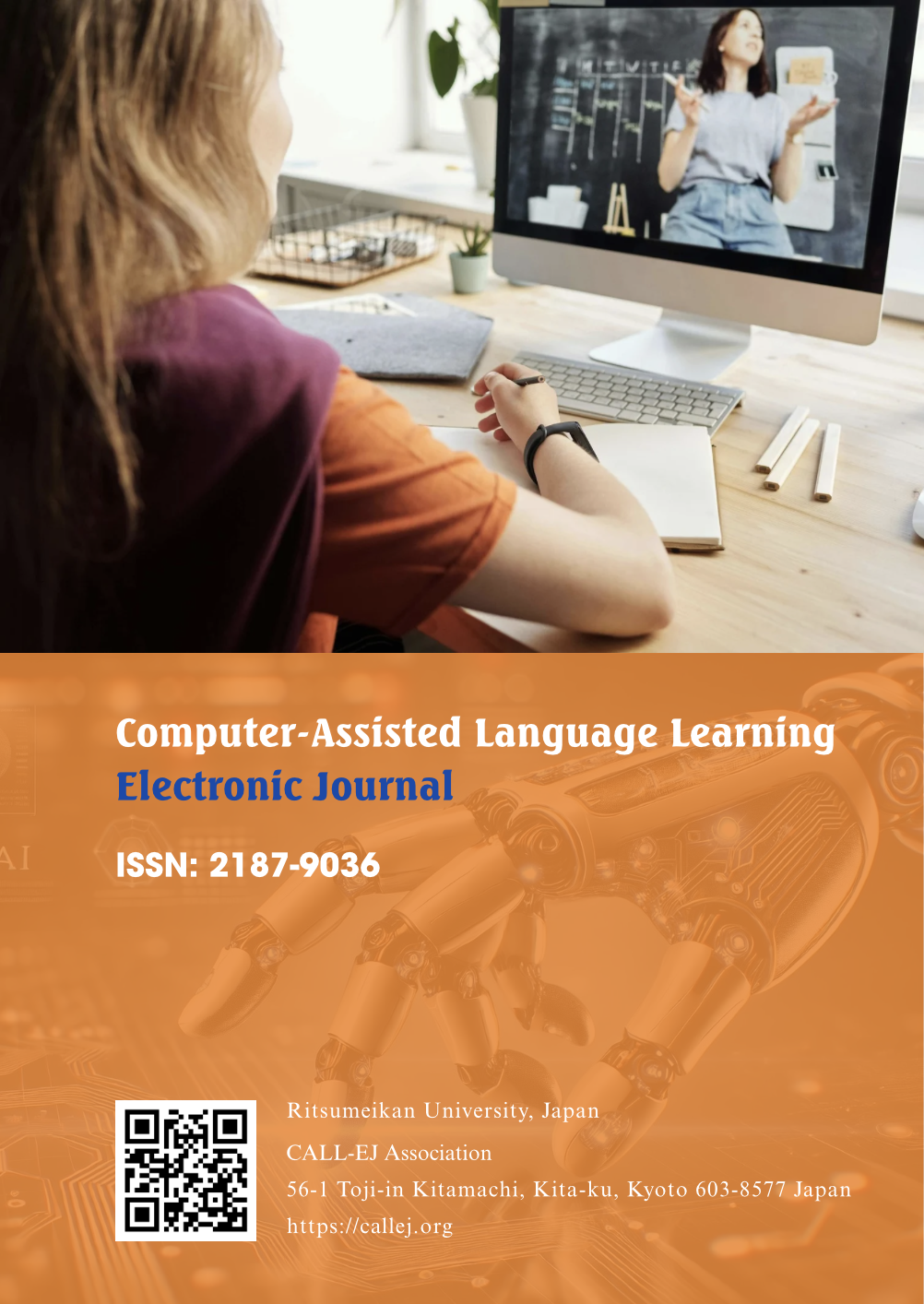Abstract
The Covid-19 pandemic period has formulated learners’ familiarity and adaptation to computer-mediated communication in higher education as an alternative to traditional face-to-face classrooms, which also transforms the attitudes of stakeholders to acknowledge the significance of computer-mediated communication (CMC). The use of computers and technological applications has been encouraged for decades, but centre of the utilisation is on the autonomous learners to actively adopt those technologies in language learning. Smartness levels of learners demonstrate learners’ ability to adopt and adapt to the technological devices in the smart learning environment (Uskov et al., 2015). However, the assessment of learners’ smartness level of language learning to explore the degree of mastery among learners in CMC of language classrooms has not been much explored. The teachers’ perceptions towards different levels of smartness among learners in AI-mediated world have been still a current gap. This chapter proposal attempts to explore teachers' perceptions towards assessing English-majored learners’ smartness level in a smart learning environment (SLE) and their remedies to optimise the effectiveness of CMC utilisation in a language classroom. This study adopts Uskov’s framework of Smartness Education (2015) as the holistic scale for assessment.
References
Buehl, D. (2023). Classroom Strategies for Interactive Learning. Routledge. https://doi.org/10.4324/9781032680842
Creswell, J. W., & Creswell, J. D. (2018). Research Design: Qualitative, Quantitative, and Mixed Methods Approaches - John W. Creswell, J. David Creswell - Google Books. In SAGE Publications, Inc.
Gacs, A., Goertler, S., & Spasova, S. (2020). Planned online language education versus crisis‐prompted online language teaching: Lessons for the future. Foreign Language Annals, 53(2), 380–392. https://doi.org/10.1111/flan.12460
Gambo, Y., & Shakir, M. Z. (2021). Review on self-regulated learning in smart learning environment. In Smart Learning Environments (Vol. 8, Issue 1). https://doi.org/10.1186/s40561-021-00157-8
Gao, B., Wan, Q., Chang, T., & Huang, R. (2019). A Framework of Learning Activity Design for Flow Experience in Smart Learning Environment (pp. 5–14). https://doi.org/10.1007/978-981-13-6908-7_2
Guo, X. R., Li, X., & Guo, Y. M. (2021). Mapping knowledge domain analysis in smart education research. Sustainability (Switzerland), 13(23). https://doi.org/10.3390/su132313234
Huang, F., Teo, T., & Zhou, M. (2019). Factors Affecting Chinese English as a Foreign Language Teachers’ Technology Acceptance: A Qualitative Study. Journal of Educational Computing Research, 57(1), 83–105. https://doi.org/10.1177/0735633117746168
Huh, K., & Lee, J. (2020). Fostering creativity and language skills of foreign language learners through SMART learning environments: Evidence from fifth‐grade Korean EFL learners. TESOL Journal, 11(2). https://doi.org/10.1002/tesj.489
Kohnke, L., Moorhouse, B. L., & Zou, D. (2023). Exploring generative artificial intelligence preparedness among university language instructors: A case study. Computers and Education: Artificial Intelligence, 5. https://doi.org/10.1016/j.caeai.2023.100156
Nguyen, P. T., Nguyen, Q. L. H. T. T., Nguyen, L. T., & Huynh, V. D. B. (2024). Investigating the e-learning choice under the learners’ perspective using demand driven learning model: insights from Vietnam. Scientific Reports, 14(1), 27437. https://doi.org/10.1038/s41598-024-78488-y
Nguyen, T. T. H., & Nguyen, T. M. (2019). Information Technology and Teaching Culture: Application in Classroom (pp. 343–355). https://doi.org/10.1007/978-981-13-8260-4_32
Pellegrini, M., Uskov, V., & Casalino, N. (2020). Reimagining and re-designing the post-COVID-19 higher education organizations to address new challenges and responses for safe and effective teaching activities. Law and Economics Yearly Review, 9.
Rusmiyanto, R., Huriati, N., Fitriani, N., Tyas, N. K., Rofi’i, A., & Sari, M. N. (2023). The Role Of Artificial Intelligence (AI) In Developing English Language Learner’s Communication Skills. Journal on Education, 6(1). https://doi.org/10.31004/joe.v6i1.2990
Shu, X., & Gu, X. (2023). An Empirical Study of A Smart Education Model Enabled by the Edu-Metaverse to Enhance Better Learning Outcomes for Students. Systems, 11(2), 75. https://doi.org/10.3390/systems11020075
Temdee, P. (2020). Smart Learning Environment: Paradigm Shift for Online Learning. In Multi Agent Systems - Strategies and Applications. IntechOpen. https://doi.org/10.5772/intechopen.85787
Treem, J. W., Leonardi, P. M., & Van Den Hooff, B. (2020). Computer-Mediated Communication in the Age of Communication Visibility. Journal of Computer-Mediated Communication, 25(1). https://doi.org/10.1093/jcmc/zmz024
Uskov, V. L., Bakken, J. P., & Pandey, A. (2015). The Ontology of Next Generation Smart Classrooms. In V. L. Uskov, R. J. Howlett, & L. C. Jain (Eds.), Smart Education and Smart e-Learning (pp. 3–14). Springer International Publishing.
Wang, S., Shi, G., Lu, M., Lin, R., & Yang, J. (2021). Determinants of Active Online Learning in the Smart Learning Environment: An Empirical Study with PLS-SEM. Sustainability, 13(17), 9923. https://doi.org/10.3390/su13179923
Zhu, Z. T., Yu, M. H., & Riezebos, P. (2016). A research framework of smart education. Smart Learning Environments, 3(1). https://doi.org/10.1186/s40561-016-0026-2

This work is licensed under a Creative Commons Attribution 4.0 International License.
Copyright (c) 2025 Author and CALL-EJ

